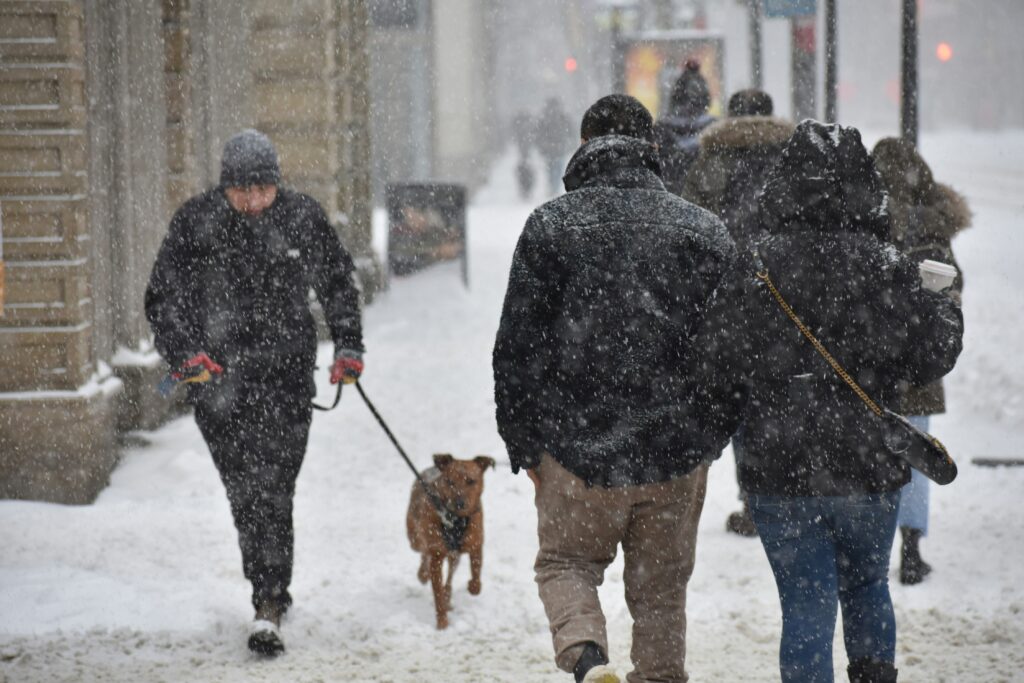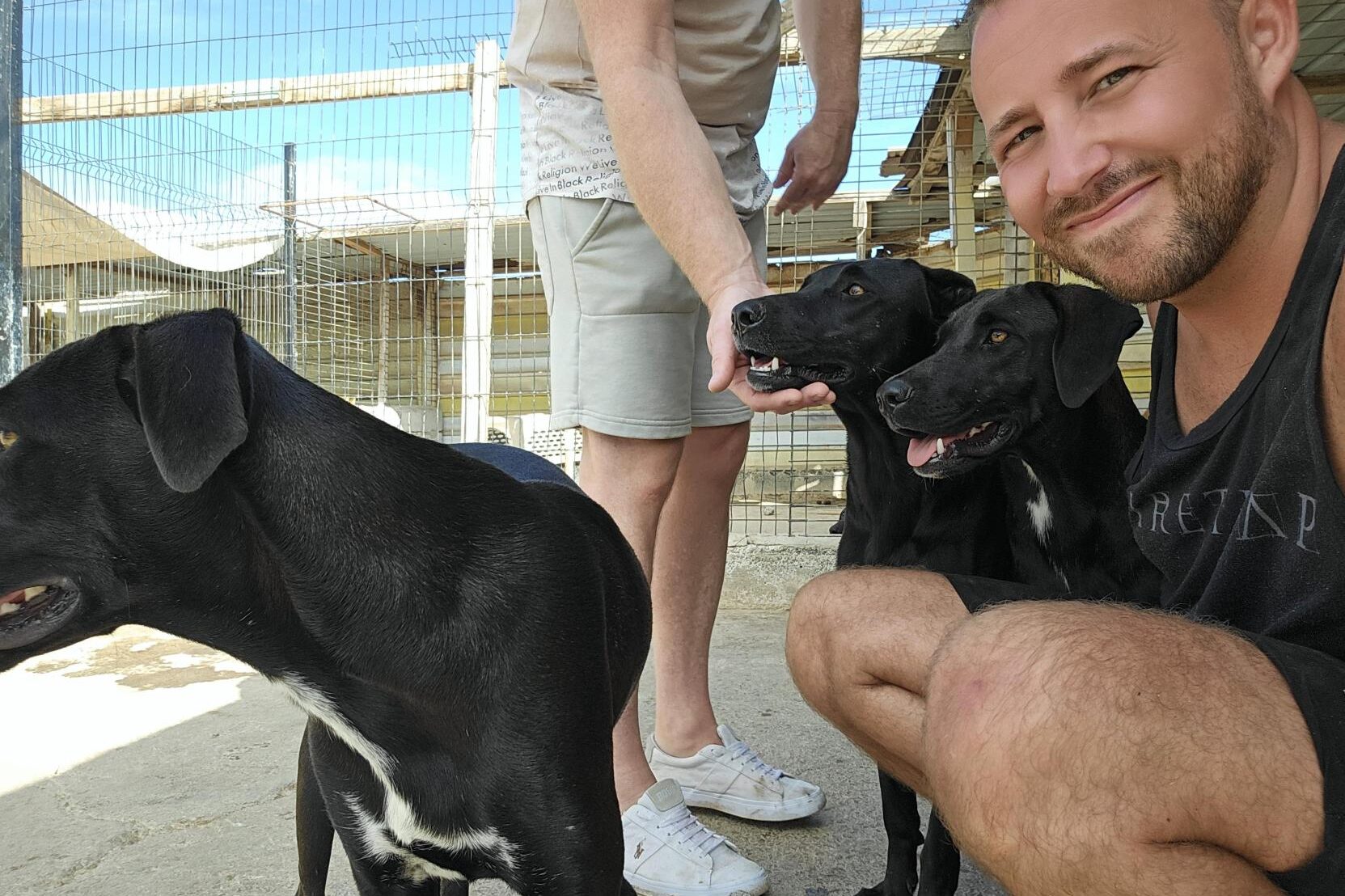As the days get shorter and the air turns crisp, your dog might still be eager for every walk, puddle splash, and park visit. But as lovely as those frosty mornings are, the colder months bring hidden risks for our four-legged friends — especially when it comes to staying warm and safe outdoors.
Whether you’ve got a bouncy puppy, a snow-loving spaniel, or a snoozy senior, it’s important to know how to protect dog paws in winter, spot the early signs of hypothermia in dogs, and make your home a cosy, comfortable space for them to rest.
1. Protect dog paws in winter

Frozen pavements, rock salt, and grit can all be harsh on a dog’s paws. Ice can crack delicate paw pads, while road salt can dry or irritate the skin.
Before heading out, try this quick 10-second test — press the back of your hand against the pavement. If it feels too cold or sharp for you, it’s too cold for your dog’s paws.
To help:
- Use a paw balm or wax before walks to create a barrier against salt and ice.
- Avoid gritted areas whenever possible — opt for grassy or wooded paths.
- Rinse and dry paws after each walk to remove salt residue and prevent irritation.
- Consider investing in light dog boots — they take a little getting used to, but many dogs adapt quickly and benefit from the protection.
Blue Cross provides great step-by-step guides on paw safety and winter walks.
2. Shorter walks, smarter play

Dogs can’t regulate their body temperature as efficiently as humans — particularly small breeds, short-haired dogs, or those with medical conditions. In chilly weather, short and frequent walks are safer than long outings.
If it’s especially icy or wet, switch up the routine with some indoor games like scent trails or puzzle toys to keep your dog mentally active. These provide great enrichment while avoiding prolonged exposure to the cold.
3. Watch for signs of hypothermia in dogs

If your dog becomes too cold, they can develop hypothermia, a potentially serious condition.
Early signs of hypothermia in dogs include:
- Shivering or trembling
- Sluggishness or seeming dazed
- Pale gums
- Cold ears and paws
- Slow breathing
If you notice any of these symptoms, move your dog indoors immediately, wrap them in a warm blanket, and contact your vet for advice.
For more detailed guidance on symptoms and recovery, visit PetMD’s guide on hypothermia in dogs.
4. How to keep senior dogs warm in winter

Older dogs often struggle more in the cold. Arthritis, joint stiffness, and reduced circulation make them more sensitive to lower temperatures.
To help your senior stay snug:
- Provide extra padding: Use orthopaedic or memory-foam beds raised slightly off the ground to avoid draughts.
- Keep them dry: After walks, towel them off immediately and let them rest somewhere warm.
- Layer up: A well-fitted waterproof coat makes a big difference.
- Reduce swimming or damp activities until spring. Wet fur can chill a senior dog quickly.
For pups and seniors alike, small lifestyle tweaks — like shorter walks and accessible sleeping spots — can keep them comfortable all season.
5. Create a warm retreat indoors

When you’re back from your walk, make sure your dog has a dedicated warm space to rest. Place their bed away from draughts or tiled floors, and if they enjoy being near you, move it to a quiet corner of the living room.
You can even make it a seasonal ritual — swap lightweight blankets for soft fleece ones, or tuck a microwaveable heat pad under the bedding for extra comfort. Just make sure it’s designed for pets and covered securely. Check out the Dogington Post’s piece on how to safely use dog heating pads.
If you’re turning the heating on, watch for dehydration. Dogs in warm homes often drink less, so keep fresh water available and encourage hydration with wet food or pet-safe broths.
6. Keep watch outdoors

Snowy days can be magical, but they come with hidden hazards — antifreeze, grit, and even compacted snow between paw pads. Try to supervise your dog at all times and discourage them from drinking puddles or eating snow.
Antifreeze is particularly dangerous, as it has a sweet taste but is highly toxic to dogs. If you suspect ingestion, call your vet immediately — even a small amount can cause serious harm. The PDSA’s guide on antifreeze poisoning offers excellent advice on preventing accidental poisoning.
7. Know when to call the pros

If your dog shows persistent shivering, disorientation, a drop in body temperature, or visible injuries from ice or salt, call your vet straight away. Small wounds can get infected faster in cold weather, and frostbite can set in quickly on ears, tails, and paws.
And remember — Scratch & Patch members have free access to our 24/7 Vet Careline, where qualified veterinary nurses can offer immediate, expert guidance whenever you’re worried.
Wrapping up…
Cold weather is part of British life — but with a few small adjustments, it can be a season of joyful walks, cosy naps, and snuggly time together.
So, grab the lead, zip up your coat, and embrace those frosty mornings — your dog will love you for it. 🐾


